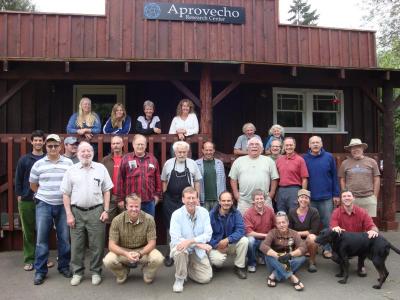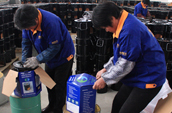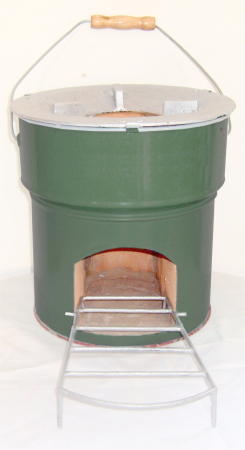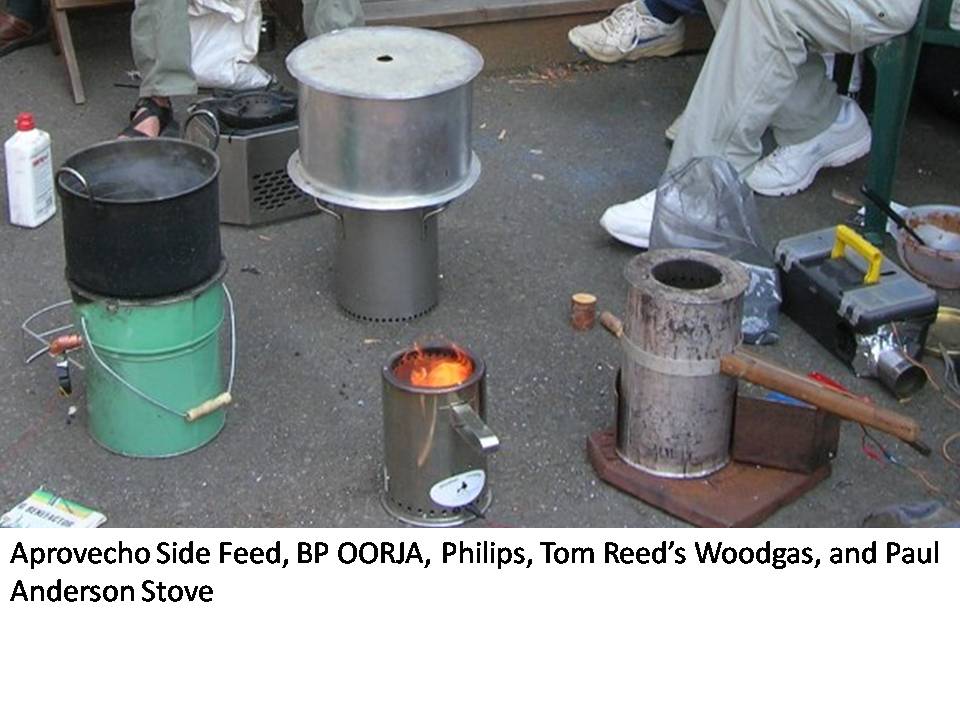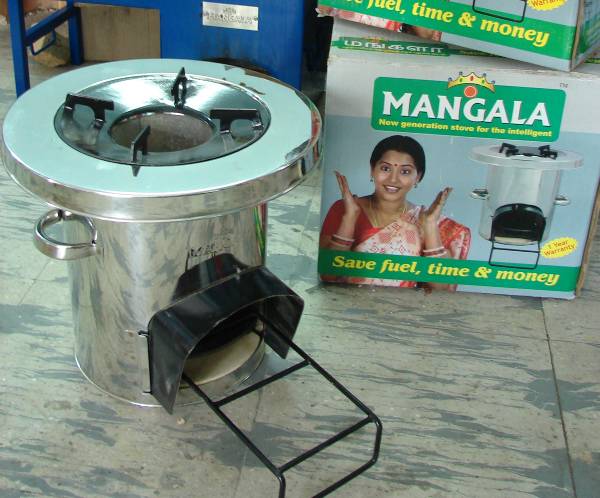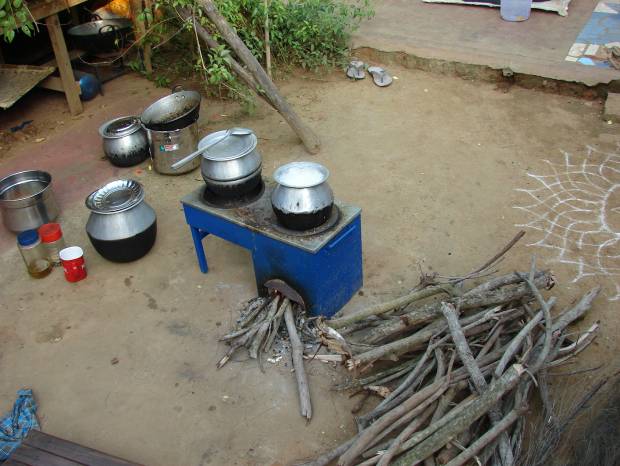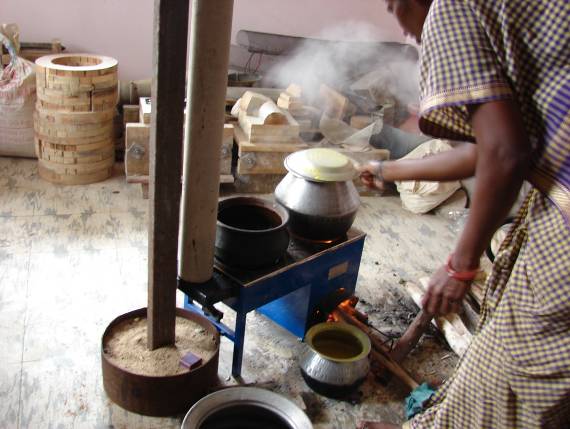Dean Still, August 2010
One fine rainy morning two fine fellows from StrawJet (http://www.strawjet.com) , an Oregon company that makes equipment to bundle agricultural waste in Malawi, wandered into the lab and asked if it’s
possible to make a stove that uses bundled corn stalks to cook food. I said that I thought it was possible and after some conversation and testing of prototypes StrawJet put up a $250 prize to encourage Stove Camp participants to make it so.
Burning corn stalks leaves quite a bit of ash that does not fall apart but keeps its shape.
For this reason stoves must be adapted to deal with a lot of solid ash. Two types of stoves
were tested: 1.) A Jon Anderson Rocket Stove with lots of draft and a grate and 2.) Two
large TLUDs built by Paul Anderson and Art Donnelley that were vertically loaded.
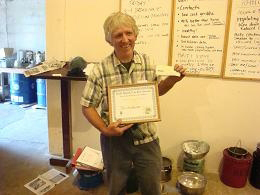
Participants voted for the best stove that, in their opinion, was most effective. Jon
Anderson won the 2010 Cat Piss Award for a tall Rocket stove made entirely from found
materials that successfully burned the bundled corn stalks. The hope is that a pilot test
could be conducted in Malawi. If so, we’ll pass along the results.
Jon and his wife Flip have been in Haiti recently for three months helping folks to build
these kinds of Rocket stoves. They are beautiful, dedicated people, who like many folk at
Stove Camp, deserve real praise and adoration. I’m happy to send them some of both and
congratulations for making a wonderful stove!

